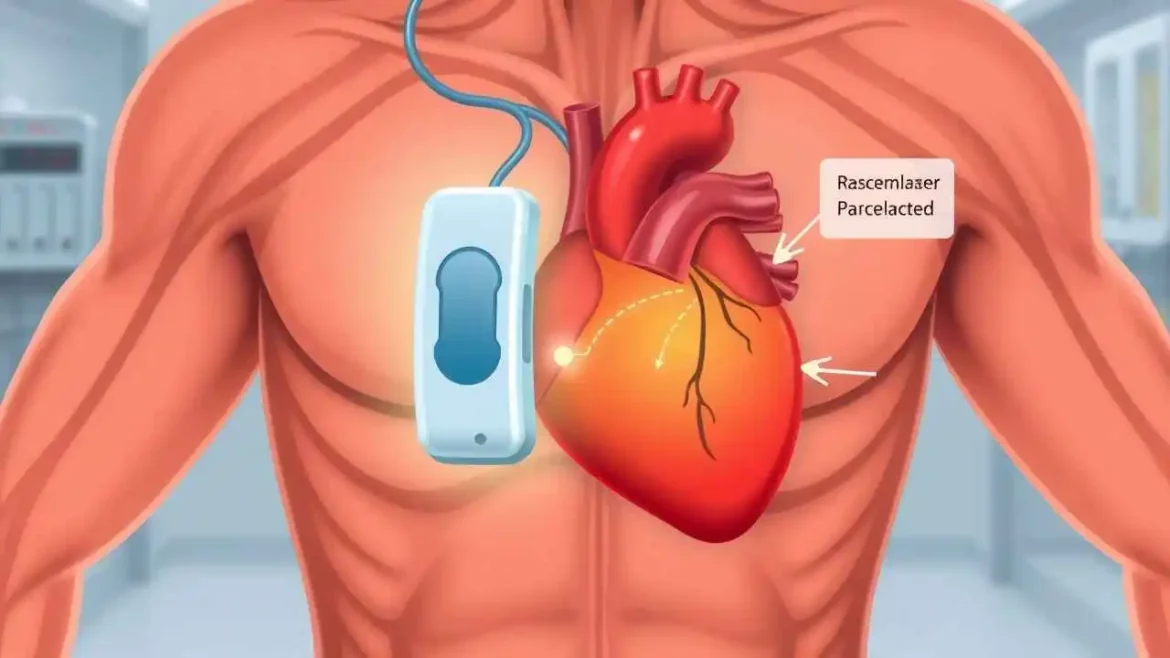The field of cardiac pacing continues to evolve. We are seeing the development of leadless pacemakers – tiny devices implanted directly into the heart chamber, eliminating the need for chest incisions and transvenous leads. Remote monitoring is becoming more sophisticated, allowing doctors to keep a close eye on patients from afar. Battery technology is improving, and devices are becoming smarter, adapting more seamlessly to a patient’s changing needs.
Conclusion
The pacemaker is a testament to medical ingenuity, offering a lifeline to millions who suffer from debilitating heart rhythm disorders. We have explored how this small device, comprising a pulse generator and leads, works by sensing the heart’s natural rhythm and providing electrical assistance only when necessary. We’ve also identified the key conditions – primarily slow heart rates due to issues with the SA node or AV conduction – that commonly necessitate pacemaker implantation, as well as its role in certain cases of heart failure.
For those living with a pacemaker, the device typically means a significant improvement in symptoms, the restoration of normal daily activities, and enhanced longevity. While considerations regarding electronic interference exist, they rarely impose severe limitations on modern life.
Ultimately, the pacemaker allows the heart to maintain its vital rhythm, enabling individuals to live fuller, more energetic lives, proving that even when our natural timing falters, technology can beautifully step in to restore harmony. We hope this explanation has provided clarity on this life-saving technology.
FAQs
- Q: What is a pacemaker?
A: A pacemaker is a small medical device implanted in the chest to help regulate abnormal heart rhythms by sending electrical impulses to the heart. - Q: Is a pacemaker necessary for everyone with heart problems?
A: No, pacemakers are only necessary for individuals with specific heart rhythm disorders, such as bradycardia (slow heartbeat) or heart block. - Q: Why is a pacemaker essential for some patients?
A: It ensures the heart beats at a normal rate and rhythm, preventing symptoms like dizziness, fatigue, fainting, and potentially life-threatening complications. - Q: How do doctors determine if a pacemaker is necessary?
A: Through diagnostic tests such as ECG, Holter monitoring, and electrophysiology studies that identify abnormal heart rhythms requiring intervention. - Q: What are the main benefits of having a pacemaker?
A: It improves heart rhythm stability, increases energy levels, reduces symptoms, and decreases the risk of stroke or heart failure due to arrhythmia. - Q: Can a pacemaker cure heart disease?
A: No, a pacemaker does not cure heart disease but manages the symptoms related to abnormal heart rhythms. - Q: Are there risks associated with pacemaker implantation?
A: Yes, risks include infection, bleeding, lead displacement, and, rarely, device malfunction. - Q: How long does a pacemaker last?
A: Most pacemakers last between 5 to 15 years, depending on device type and usage. - Q: Will a pacemaker restrict my daily activities?
A: Generally, no. Most patients resume normal activities, but certain precautions around strong magnetic fields are advised. - Q: Can pacemakers interfere with electronic devices?
A: Modern pacemakers are well shielded, but strong electromagnetic fields from MRI machines or industrial equipment can interfere with them. - Q: What symptoms indicate the need for a pacemaker?
A: Symptoms include persistent fatigue, dizziness, fainting, shortness of breath, and slow or irregular heartbeat. - Q: What are the types of pacemakers?
A: Common types include single-chamber, dual-chamber, and biventricular pacemakers, each serving different heart rhythm needs. - Q: Is pacemaker implantation painful?
A: The procedure is usually done under local anesthesia and sedation, causing minimal pain during implantation. - Q: How long is the recovery period after pacemaker implantation?
A: Most patients recover within a few days to a week, with minor restrictions on arm movement initially. - Q: Can a pacemaker be removed if no longer needed?
A: Pacemakers are generally left in place unless complications arise; the device can be replaced or upgraded as needed. - Q: What are the disadvantages of having a pacemaker?
A: Possible disadvantages include infection risk, device malfunction, lifestyle restrictions, and the need for battery replacement surgeries. - Q: How often should a pacemaker be checked?
A: Regular follow-ups every 3 to 12 months are necessary to monitor device function and battery life. - Q: Can a pacemaker help with heart failure?
A: Certain types, like biventricular pacemakers, can help improve heart function in some heart failure patients. - Q: Are pacemakers suitable for children?
A: Yes, pacemakers can be implanted in children with appropriate indications. - Q: How does a pacemaker detect when to send electrical impulses?
A: It monitors the heart’s natural rhythm and sends impulses only when it detects an abnormal or slow heartbeat. - Q: Is the implantation of a pacemaker a major surgery?
A: It is considered a minor surgical procedure, usually performed under local anesthesia with a short hospital stay. - Q: Can lifestyle changes reduce the need for a pacemaker?
A: In some cases, managing underlying conditions like electrolyte imbalances or medication adjustments can help, but pacemakers are needed when electrical conduction problems persist. - Q: What is the cost of a pacemaker and implantation?
A: Costs vary by country and healthcare system but generally include the device price and surgical fees. - Q: Are there alternatives to pacemakers?
A: Some arrhythmias may be treated with medication or catheter ablation, but pacemakers are the preferred option for certain conduction problems. - Q: Can I travel with a pacemaker?
A: Yes, but you should carry identification and inform security personnel as metal detectors may trigger alarms. - Q: Does a pacemaker affect sexual activity?
A: Generally, no. Most patients can resume normal sexual activity after recovery. - Q: What happens if a pacemaker battery dies suddenly?
A: Pacemaker batteries typically last years, and device checks help prevent sudden failure; replacement is scheduled before battery depletion. - Q: Can pacemakers be updated or upgraded?
A: Yes, newer technology devices can replace older pacemakers to improve functionality. - Q: How do pacemakers improve quality of life?
A: By stabilizing heart rhythm, they reduce symptoms and allow patients to engage in daily activities with less fatigue and risk. - Q: Should I be worried about pacemaker failure?
A: Pacemaker failure is rare due to regular monitoring and advances in technology; immediate medical attention is required if symptoms recur.
FAQs for Patients
Q1: What is a pacemaker and why might I need one?
A: A pacemaker is a small medical device implanted under the skin near your chest that helps regulate your heartbeat. It sends electrical impulses to your heart to ensure it beats at a normal rate and rhythm. You might need a pacemaker if your heart beats too slowly (bradycardia), has irregular rhythms, or if your heart’s natural pacemaker is not working properly.
Q2: How is a pacemaker implanted? Is the procedure painful?
A: The implantation is usually done under local anesthesia with mild sedation. A small incision is made near the collarbone, and leads (wires) are guided into the heart through a vein. The device is then placed under the skin. Most patients feel little pain during the procedure and typically stay in the hospital for one or two days.
Q3: What lifestyle changes should I expect after getting a pacemaker?
A: Most people can return to normal activities within a few weeks, but you should avoid heavy lifting or strenuous arm movements near the implantation site initially. Avoid strong magnetic fields (e.g., MRI machines unless your device is MRI-compatible) and inform airport security about your pacemaker. Regular follow-ups with your doctor are essential.
Q4: Can I use my smartphone, microwave, or other household electronics with a pacemaker?
A: Yes, most everyday devices like smartphones and microwaves are safe to use. However, keep your phone at least 6 inches away from the pacemaker and use the opposite ear when talking. Avoid close or prolonged contact with devices that emit strong electromagnetic fields.
FAQs for Caregivers
Q1: How can I help a loved one who has just received a pacemaker?
A: Offer support during their recovery by helping with daily tasks and encouraging rest. Monitor the incision site for signs of infection (redness, swelling, discharge). Help them avoid strenuous activities and remind them of follow-up appointments and medication schedules.
Q2: What signs should I watch for that might indicate a problem with the pacemaker?
A: Contact a healthcare provider immediately if your loved one experiences dizziness, fainting, palpitations, swelling in the legs, shortness of breath, or if the pacemaker site becomes painful, swollen, or shows signs of infection.
Q3: Are there any special precautions when traveling with a pacemaker?
A: Yes. Always carry a pacemaker identification card. Inform airport security personnel about the device to avoid prolonged exposure to metal detectors. It’s advisable to undergo a manual pat-down instead of walking through metal detectors. Also, plan for access to medical care if traveling far from home.
FAQs for Medical Professionals
Q1: What are the key considerations when selecting a pacemaker for a patient?
A: Selection depends on the patient’s underlying rhythm disturbance (e.g., sinus node dysfunction, AV block), comorbid conditions, expected pacing needs (single vs. dual chamber), and lifestyle factors. Device compatibility with MRI or remote monitoring capabilities are also important.
Q2: What are common complications associated with pacemaker implantation and how are they managed?
A: Complications include lead dislodgement, infection, hematoma, pneumothorax, and device malfunction. Management ranges from conservative treatment and antibiotics for infections to surgical revision for lead issues. Early detection through clinical and device interrogation is critical.
Q3: How do you interpret pacemaker interrogation data?
A: Interrogation provides information on lead impedance, battery status, pacing thresholds, sensing amplitudes, and arrhythmia episodes. Understanding these parameters helps assess device function and guide reprogramming to optimize therapy.
Q4: What are the latest advancements in pacemaker technology?
A: Innovations include leadless pacemakers, MRI-compatible devices, devices with remote monitoring capabilities, and rate-responsive pacing that adjusts to patient activity. These advancements improve patient comfort, safety, and clinical outcomes.
Medical Disclaimer:
The information provided on this website is for general educational and informational purposes only and is not intended as a substitute for professional medical advice, diagnosis, or treatment. Always seek the advice of your physician or other qualified health provider with any questions you may have regarding a medical condition. Never disregard professional medical advice or delay in seeking it because of something you have read on this website.



